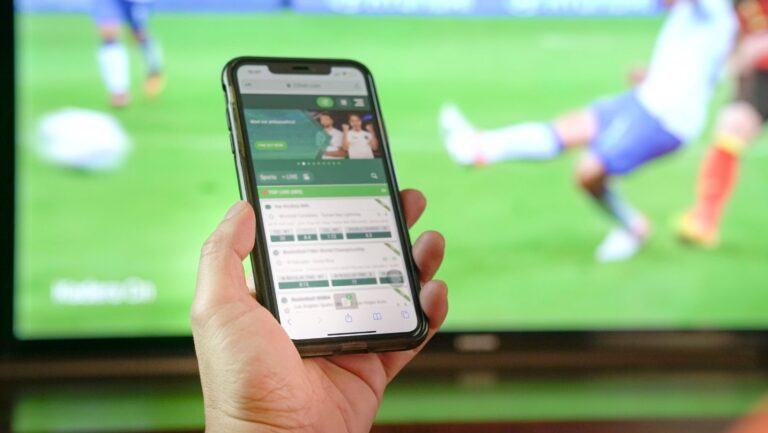If you’re a therapist looking to grow your private practice, you know that marketing is essential. But how do you create a marketing budget that works for your business? In this article, we’ll show you how to make a therapist marketing budget that will help you achieve your revenue goals.
Understanding Your Therapist Marketing Budget
To create a therapist marketing budget, you need to start by understanding how much you should be spending. According to industry standards, your marketing budget should be between 5-15% of your desired revenue. For example, if you want to earn $250,000 a year, you should budget an average of $2,500 a month to get there. However, a survey found that 79% of therapists spend less than $100 a month on marketing. This means that many therapists are missing out on potential clients and revenue.
Identifying Your Target Audience
Once you have a budget in mind, you need to identify your target audience. Who are the people you want to reach with your marketing? What are their needs and pain points? By understanding your target audience, you can create a marketing strategy that speaks directly to them. This will help you attract more of the right clients to your practice. Plus, it will help you get out of debt.
Key Takeaways
- Understanding your marketing budget is the first step to creating a successful therapist marketing strategy.
- Identifying your target audience is crucial to creating a marketing strategy that resonates with potential clients.
- Developing a solid marketing strategy and optimizing your online presence is key to growing your private practice.
Understanding Your Marketing Budget
Creating a marketing budget is an essential part of any therapy practice. It helps you define your marketing goals, allocate funds strategically, and monitor and adjust expenses. Here are some key elements to consider when creating your marketing budget:
Defining Marketing Budget Elements
Your marketing budget should include all essential marketing expenses, such as website design and maintenance, advertising, branding, and social media management. It should also include any additional expenses related to marketing, such as attending conferences or networking events.
When defining your marketing budget elements, it’s important to consider your return on investment (ROI). This means evaluating the effectiveness of each marketing expense and determining whether it’s worth the cost. For example, if you’re spending a significant amount on advertising but not seeing a significant increase in clients, you may need to adjust your strategy or allocate funds elsewhere.
Allocating Funds Strategically
Once you’ve defined your marketing budget elements, it’s time to allocate funds strategically. This means determining how much you’ll spend on each expense and when you’ll spend it.
One way to allocate funds strategically is to prioritize essential marketing expenses and allocate funds accordingly. For example, website design and maintenance are essential expenses that should be prioritized over attending conferences or networking events.

It’s also important to consider tax-deductible expenses when allocating funds. Many marketing for therapists expenses, such as website design and advertising, are tax-deductible, which can help reduce your overall expenses.
Monitoring and Adjusting Expenses
Finally, it’s important to monitor and adjust your marketing expenses regularly. This means tracking your expenses and evaluating their effectiveness on a regular basis.
If you’re not seeing a significant return on investment from a particular expense, it may be time to adjust your strategy or allocate funds elsewhere. It’s also important to track your expenses to ensure that you’re staying within your budget and not overspending.
In conclusion, understanding your marketing budget is essential for any therapy practice. By defining your marketing budget elements, allocating funds strategically, and monitoring and adjusting expenses, you can create an effective marketing strategy that helps you reach your goals.
Identifying Your Target Audience
As a therapist, you need to identify your target audience to create an effective marketing budget. Analyzing client demographics, focusing on ideal clients, and expanding your reach are some of the ways to identify your target audience.
Analyzing Client Demographics
Before identifying your target audience, you need to analyze your current client demographics. This can help you understand who your current clients are, what their needs are, and how you can better serve them. You can use this information to identify your target audience and create a marketing budget that is tailored to their needs.
Focusing on Ideal Clients
Focusing on your ideal clients is essential when creating a marketing budget. Your ideal client is the type of client you want to work with and who is most likely to benefit from your services. You need to identify their needs, preferences, and behaviors to create a marketing budget that resonates with them.
To identify your ideal client, you can ask yourself questions such as: What are their problems? What are their goals? What are their values? What are their demographics? Once you have identified your ideal client, you can create a marketing budget that targets them specifically.
Expanding Your Reach
Expanding your reach is essential to growing your therapy practice. You can expand your reach by targeting new audiences, such as those who are not currently seeking therapy but could benefit from it. You can also expand your reach by focusing on a specific niche, such as anxiety or depression, and becoming an expert in that area.
To expand your reach, you can use various marketing channels such as social media, email marketing, and content marketing. You can also partner with other professionals in your field to increase your visibility and credibility.
In conclusion, identifying your target audience is crucial when creating a therapist marketing budget. Analyzing client demographics, focusing on ideal clients, and expanding your reach are some of the ways to identify your target audience. By doing so, you can create a marketing budget that resonates with your ideal client and helps you grow your therapy practice.
Developing Your Marketing Strategy
Once you have determined your therapist’s marketing budget, it’s time to develop your marketing strategy. A solid marketing plan will help you reach your target audience and grow your practice. Here are some key components to consider when developing your marketing strategy.
Leveraging Digital Marketing
Digital marketing is a powerful tool for therapists looking to expand their reach. Creating a website and social media presence can help you connect with potential clients and establish your brand. Make sure your website is user-friendly and optimized for search engines. Use social media to share content and engage with your audience. Consider running targeted ads to reach specific demographics.
Creating Compelling Content
Creating compelling content is a great way to attract potential clients and establish yourself as an expert in your field. Consider writing blog posts, creating videos, or recording a podcast. Share your content on your website and social media channels. Make sure your content is informative, engaging, and relevant to your target audience.
Building a Strong Referral Network
Building a strong referral network is essential for growing your practice. Reach out to other therapists, doctors, and healthcare providers in your area. Attend networking events and conferences to meet new people and build relationships. Make sure you have a clear understanding of your ideal client and the services you offer so you can effectively communicate with your referral sources.
By leveraging digital marketing, creating compelling content, and building a strong referral network, you can effectively market your therapy practice. Remember to track your marketing efforts and adjust your strategy as needed to ensure you are getting the best return on your investment.
Optimizing Online Presence
Having a strong online presence is crucial for therapists in today’s digital age. It helps you reach a wider audience, establish credibility, and attract potential clients. In this section, we will discuss some ways to optimize your online presence and improve your marketing efforts.
Maximizing SEO and Google My Business
Search engine optimization (SEO) is the process of improving your website’s visibility on search engines like Google. By optimizing your website for relevant keywords, you can increase the chances of your website appearing on the first page of search results. This can lead to more traffic and potential clients.
One way to improve your SEO is by creating a Google My Business listing. This free tool allows you to manage your business information on Google, including your address, phone number, and website. By verifying your listing and optimizing it with relevant keywords, you can improve your local search rankings and attract more clients in your area.
Enhancing Your Website’s Impact
Your website is often the first impression potential clients have of your practice. It’s important to make sure your website is well-designed, easy to navigate, and provides valuable information to visitors.
One way to enhance your website’s impact is by choosing a domain name that reflects your practice and is easy to remember. You should also make sure your website design is professional and visually appealing, with a clear and concise homepage that highlights your services.
Your About page should provide more detailed information about your practice, including your qualifications, experience, and approach to therapy. Finally, make sure your contact form is easy to find and use so potential clients can easily get in touch with you.
Social media and online directories can also be valuable tools for therapists to reach potential clients. By creating a presence on social media platforms like Facebook, Twitter, and Instagram, you can connect with potential clients and share valuable content related to mental health.
Online directories like Psychology Today and TherapyDen can also help you reach a wider audience and attract potential clients.

By creating a profile on these directories and optimizing it with relevant keywords, you can improve your visibility and attract more clients to your practice.
In conclusion, optimizing your online presence is a crucial part of creating a successful therapist marketing budget. By maximizing SEO and Google My Business, enhancing your website’s impact, and utilizing social media and online directories, you can improve your visibility and attract more potential clients to your practice.
Frequently Asked Questions
What Are The Essential Components Of A Marketing Budget For Therapists?
A therapist’s marketing budget should include expenses for online and offline marketing tactics, such as website design, search engine optimization (SEO), social media advertising, print ads, and networking events. It should also include expenses for creating and distributing valuable content, such as blog posts, videos, or podcasts.
How Can A Mental Health Professional Determine The Right Amount To Allocate To Marketing?
To determine the right amount to allocate to marketing, you should consider your desired revenue, your target audience, and your competition. As a general rule, therapists should allocate between 5-15% of their desired revenue to marketing efforts. However, this percentage may vary depending on your location, specialty, and competition. Also keep in mind your annual income.
What Strategies Should Therapists Consider When Creating A Marketing Budget Plan?
When creating a marketing budget plan, therapists should consider their target audience, their unique value proposition, and their competition. They should also consider the most effective marketing tactics for their niche and budget, such as SEO, content marketing, social media advertising, or referral marketing.
How Does One Measure The Effectiveness Of A Therapist’s Marketing Budget?
To measure the effectiveness of a therapist’s marketing budget, you should track your website traffic, leads, and conversions. You should also track your return on investment (ROI) for each marketing tactic, such as cost per click (CPC), cost per lead (CPL), or cost per acquisition (CPA). By analyzing this data, you can identify which marketing tactics are most effective and adjust your budget accordingly.
What Percentage Of Revenue Should Therapists Typically Invest In Marketing Efforts?
Therapists should typically invest between 5-15% of their desired revenue in marketing efforts. However, this percentage may vary depending on their niche, location, competition, and marketing goals.
What Cost-Effective Marketing Tactics Can Therapists Employ To Maximize Their Budget?
Therapists can employ several cost-effective marketing tactics to maximize their budget, such as creating valuable content, optimizing their website for SEO, networking with other professionals, and leveraging social media platforms. They can also offer referral incentives, such as discounts or free sessions, to encourage their existing clients to refer new clients.




